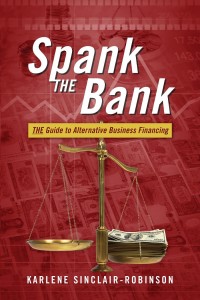Small Business
The Economics of Lending: Money vs. Goods and Services
May 21, 2013 If I were to offer you the choice between a free DVD with a retail value of $20 or a free $20 bill, which one would you take?
If I were to offer you the choice between a free DVD with a retail value of $20 or a free $20 bill, which one would you take?
Unless the DVD was something you were going to buy anyway or unless it was a rare item that is hard to find, you’d probably accept the cash. I would too, and that’s because I can turn around and exchange the $20 for anything I want. This isn’t to say that someone wouldn’t accept a DVD and give you something of value in return. You could probably do this but it would be a hassle compared to buying something with cash. Cash is the ultimate liquid asset. It has the same numerical value to all that evaluate it and it is acceptable everywhere.
If this is the case, then why do governments set limits on transactions that only involve cash vs. transactions that involve cash in exchange for a good or service? The reference I’m making here is to usury. Many states govern the interest that can be charged on a loan. This is done to protect borrowers but in doing so, they end up hurting them.
For example:
A manufacturer spends $100 to create a commercial refrigerator, but they sell it to a business for $1,000. That’s equates to a fee of 900%. Once the business books it as inventory, they will attempt to sell that refrigerator to a consumer for an even higher price to make a profit. While it’s a nice windfall for the manufacturer, it’s capitalism at its finest.
But what if the manufacturer lent the business $100 cash in exchange for $1,000 back? Does that change the transaction significantly? In our example above, the manufacturer gave the business an item worth $100 and got $1,000 cash in exchange. The business hopes to sell that item for more and turn a profit but a couple things could happen:
- Consumers might not be willing to pay more than $1,000 or anything at all for that model/make/color
- The refrigerator could get damaged and lose its value
If these scenarios were to occur, the business may try to liquidate the inventory for a lesser amount and take a loss, but doing that might not be easy. The refrigerator might have to be inspected and appraised before a buyer is confident to make the purchase. This problem doesn’t happen with cash. People don’t go out and appraise the value of a $100 bill to determine if it’s worth more or less than $100. The other possibility is that the business can’t liquidate it at all and they end up losing the entire $1,000 they spent.
What’s interesting is that if the business had accepted a $100 bill in exchange for paying $1,000 at a later date, that $100 bill wouldn’t have the real risk (discounting hyper-inflation) of becoming worthless tomorrow or becoming the object of a difficult liquidation.
 So when faced with choices again… would you rather take a refrigerator someone spent $100 to make and try to sell it for more than $1,000 or would you rather someone give you $100 cash and you do whatever you want to try to turn that into more than a thousand bucks? On the one hand you have a refrigerator which might have a decent retail market and on the other hand you have cold hard cash that you can do anything with to try and make the necessary profit. You might choose refrigerator but you might choose the cash especially if you had a rock solid idea for that hundred bucks.
So when faced with choices again… would you rather take a refrigerator someone spent $100 to make and try to sell it for more than $1,000 or would you rather someone give you $100 cash and you do whatever you want to try to turn that into more than a thousand bucks? On the one hand you have a refrigerator which might have a decent retail market and on the other hand you have cold hard cash that you can do anything with to try and make the necessary profit. You might choose refrigerator but you might choose the cash especially if you had a rock solid idea for that hundred bucks.
If you’re an expert in your trade, you might be able to build your own higher-quality refrigerator for the same cost of $100 and be able to sell it for $2,000. Sure beats buying a crappy lower quality one and struggling to sell it for more than a thousand doesn’t it? Then you could pay the $1,000 owed and walk away with $1,000 in profit.
Sounds awesome except some states might deem the transaction illegal because to give a business $100 cash in exchange for $1,000 over a certain time period is usurious and predatory to the borrower. But selling a refrigerator valued at $100 to a business for $1,000 is okay, even if the business is never able to sell it.
In the eyes of a state, it is okay for a business to pay a 900% markup for an illiquid asset but it is dangerous to pay a 900% markup for the most liquid asset of all. I don’t understand it. If the idea is to prevent lenders from poaching borrowers or borrowers from making bad business decisions, then why is it okay for someone to sell a product for a lot more than they paid for it? Is a manufacturer selling a $100 refrigerator to a business for $1,000 usurious?
Perhaps your answer would be that a business owner wouldn’t engage in such a transaction if he/she didn’t believe it could be sold for more, either because there is an established retail market or because of sufficient market research. That is a weak defense because businesses get stuck with inventory they can’t sell all the time. Whether the market changed or it was just a bad business decision, Americans attitude towards speculation on a good or service is one of total acceptance. But give a man a dollar and he can’t be trusted to earn back more than a few cents on it. A legislator might evaluate these potential returns on a $1 investment like this:
Turn it into $1.05? sure!
Turn it into $1.15 maybe…
Turn it into $2.00? Let’s make laws to prevent people from thinking that way!
In many states, if you borrow a dollar so you can make three but it cost you a dollar in interest to make this happen, it’s illegal. But if you pay a dollar for an old banana peel with the hope of selling it for $3, that’s a business transaction.
I could rehash examples over and over, but where I’m going with this is that there are things like credit history and risk criteria that prevent people from borrowing a dollar at a relatively low rate. Naturally, the more risky the borrower, the higher the cost. After a certain level though, the law intervenes. If the amount of risk warrants a very high rate of interest, more than what is allowed by law, the government would rather the borrower get nothing than allow the transactions to go through. It’s a very sad position the government takes on its citizens, that the borrower is not capable of generating the return they believe or that that they lack the intelligence to know what they’re engaging in and therefore the transaction should be stopped altogether. In a utopian society, saving people from themselves might seem fair and just, but in reality there are millions of people and businesses with less than stellar credit, disqualifying them from borrowing at all because to compensate for risk would require a rate of interest disallowed by law.
At this time last year, 53% of Americans had credit scores of 700 or better. 700 is that magic threshold and it means that 47% of Americans are going to have a hard time obtaining credit or won’t be able to get it at all. When the laws were written to protect borrowers, I highly doubt the legislators understood they would be locking out almost half the country.
It’s ironic then that in times of financial crisis, government points the finger at banks for keeping credit tight, when it is nearly impossibly to free it up because of how regulated it is.
 Credit has been screwy the last few years because government intervention is wreaking havoc on the market. The maximum allowable interest rate on an SBA 7(a) loan maturing in less than 7 years is the Prime Rate + 2.25%. That would be 5.5% annually. FICO states that the odds of a borrower becoming delinquent on their loan (90 days or more behind) range from 15% to 87% if their score is less than 700.
Credit has been screwy the last few years because government intervention is wreaking havoc on the market. The maximum allowable interest rate on an SBA 7(a) loan maturing in less than 7 years is the Prime Rate + 2.25%. That would be 5.5% annually. FICO states that the odds of a borrower becoming delinquent on their loan (90 days or more behind) range from 15% to 87% if their score is less than 700.
How can you expect to make money if you can only charge a maximum of 5.5% when 47% of all Americans have a 15 to 87% chance of going delinquent or defaulting? You can’t and that’s why the Small Business Administration exists. In order to manipulate banks into making wildly unprofitable loans to businesses, the Federal Government via the SBA guarantees up to 85% of the losses banks are stuck with. It’s a bandaid solution to the broken market that usury laws create.
The SBA also empowers banks to crush private sector competition since many non-bank financial institutions do not participate in the SBA program and therefore need to charge vastly higher rates to compensate for risk.
But even the SBA has strict criteria on default coverage. Many borrowers do not meet the SBA’s criteria, leaving the bank unable to lend to them.
It is no surprise then that the end result of continued credit market dysfunction has led to non-bank financial institutions getting creative. If you can’t loan a man a buck in return for two, then buy 2 bucks worth of his future success in exchange for a buck today. That was the original basis behind Merchant Cash Advance financing and the concept is rooted in factoring. Americans accept the buy/sell arrangement in business no matter how much risk each party is taking and so if we start treating cash as an asset, of which there is nothing more liquid, then we’ve finally cured the disconnect of money versus product/service.
For those with heavy debt, critics point fingers at the lenders, disregarding the cash the borrower got as a seemingly empty asset with no value that disappeared over night, a trick they’ll conclude was all part of the lender’s plan to saddle the borrower with evil debt and interest charges.
Somewhere along the line, a few people stopped thinking about how they could turn a dollar into two and started thinking how they could use the dollar to pay for something they already got while worrying about the dollar and interest owed on it at a later date. As this psychology has taken root in our culture, people have painfully learned that the ability to borrow runs out and the reality of owing a lot of money interferes with the comfort of living the way they did before. Lenders have taken losses and legislators have enacted laws to prevent people from hurting themselves. It all comes back full circle as we wonder now why banks aren’t lending and people can’t get credit.
There are many solutions, some temporary, some long-term, some will help a little, and some will help a lot. All of the debates, arguments, and finger pointing don’t change the fact that no matter how much progress we make, there are people out there that are wondering how they can borrow a dollar today to pay for something they already got. Businesses borrow to pay for past due rent, pay off inventory, taxes, payroll, and equipment. There are instances when a cash infusion is appropriate because the business will bounce back and there are instances when a loan will prop an insolvent business up for a short while, only for it to finally fail because the profitability or cash-flow problems were never fixed.
In America we all understand the trading of goods and services for money, but when money is traded for money, we get confused. If you are willing to pay $1,000 for a refrigerator it cost someone else $100 to make with the belief that you could resell it for $2,000, then there is no reason why the manufacturer shouldn’t be able to borrow $100 and go direct to the consumer themselves. The $900 interest fee is justified. Let’s not forget that a competing lender will charge less to try and steal the borrower away. The market will takeover until the perfect balance is met between risk and reward. When we legislate away this natural process we cause dysfunction, creating the needs for bandaids like government guarantees to force a market into existence while disrupting all of the other ones.
Undo the regulations and inspire the masses to turn a dollar into two, a hundred, or a thousand! The possibilities are endless with cash. If you can’t think of a way to turn a healthy profit with the most liquid asset on Earth, then chances are your luck won’t be much better with selling refrigerators or anything else.
– Merchant Processing Resource
https://debanked.com
MPR.mobi on iPhone, iPad, and Android
Merchant Cash Network Hosts MCA Info Session
April 20, 2013I recently had the opportunity to sit in on an informational session for small business owners hosted by New York City based ISO, Merchant Cash Network (MCN). On Wednesday April 10th, small businesses packed into a room at 1375 Broadway to learn about alternative financing with a focus on Merchant Cash Advance. MCN’s vast knowledge on the subject was obvious and I definitely believe these grass roots sessions are an excellent way to both educate the public and to bring businesses together to network. Great work guys!


Factoring Construction Deals: It’s not impossible
April 18, 2013 Being my first post in the Small Business Corner, allow me to introduce myself. My name is Steve Ontiveros and I’m the founder of The Factoring Place. I’m good at finding the right factoring company for my clients based on their unique situations. Factoring and MCA really aren’t that different. Each company seeking a merchant cash advance is unique, like each factoring client is unique. Not all merchant cash advance companies are alike, and similarly not all factoring companies offer the same program & factoring rate. I became a factoring broker because I wanted to make sure my clients were getting the very best factoring deal for their unique situation.
Being my first post in the Small Business Corner, allow me to introduce myself. My name is Steve Ontiveros and I’m the founder of The Factoring Place. I’m good at finding the right factoring company for my clients based on their unique situations. Factoring and MCA really aren’t that different. Each company seeking a merchant cash advance is unique, like each factoring client is unique. Not all merchant cash advance companies are alike, and similarly not all factoring companies offer the same program & factoring rate. I became a factoring broker because I wanted to make sure my clients were getting the very best factoring deal for their unique situation.
Many factors lack the c-c-c-courage needed to fund a construction deal. Preliminary & Mechanic’s Liens, Payment & Performance Bonds, Progress Billing, and Retention, OH MY! Follow me along the “Yellow Brick Road” to mitigate the common risks of factoring construction deals.y factoring and merchant cash advance brokers turn down or walk away from construction companies seeking working capital. Factoring construction companies is a niche within a niche. As a broker, understanding the inherent risks of construction factoring can help you find the right factoring firm that will successfully fund your client. Understanding how each factoring company operates is also important to knowing whether or not your client will get funded.
Actually, you don’t have to live in the fantasy world of “Oz” to successfully navigate the unique risks found in a typical construction deal. When you peel back the curtain inside the “Emerald City Factoring Company,” you’ll find that there are no wizards or wizardry going on at all. But for this article, I’ll be your Emerald City Factoring Company Wizard. I’ll help you understand construction factoring giving you the confidence to walk the walk and get your construction client funded.
Construction Factoring 101: Preliminary Lien Notice & Mechanic’s Liens
A Preliminary Lien Notice is a formal document sent by the contractor, sub contractor, material supplier, equipment lessor – and factoring company in some cases– to the owner of the project. This “pre-lien” establishes the right to file a mechanic’s lien later on down the road. If the pre-lien is sent and the claimant’s bill is paid, the pre-lien has no further legal effect. However, if the bill is not paid then the claimant may now file a mechanic’s lien on the owner’s property. An active mechanic’s lien on a property ties that property up, leaving it in a position such that it cannot be sold or transferred to another party until the mechanic’s lien is released. Roughly 40 states in the US require a preliminary lien to be present before a mechanic’s lien can be enforced–check the laws in your state to see where you stand.
The Emerald City Factoring Company often requires its construction clients to provide evidence of a pre-lien being sent to everyone up the food chain, including the owners. In fact, Emerald City Factoring Company has been known to file a pre-lien of its own to further protect its position. True, Emerald City Factoring Company is not a contractor, supplier, or equipment lessor. But, because Emerald City Factoring Company has a blanket UCC1 on all assets of the client, the factor is indeed a supplier of material and equipment on the job. Even if the General Contractor argues a factoring company has no legal standing to file a pre-lien, the owner doesn’t care. The owner will simply tell the General Contractor to ensure all invoices are paid to all subcontractors so that the factoring company’s pre-lien won’t magically turn into a mechanic’s lien. Having the pre-lien in place allows the Emerald City Factoring Company to file a mechanic’s lien if payment is not made, which means the Wizards running the show can sleep well at night.
Construction Factoring 102: Payment & Performance Bonds
Performance bonds are used in the construction industry as a tool for the owner of the property being developed to guarantee that the value of the work will not be lost in the case of an unfortunate event (such as insolvency of the contractor.) A payment bond guarantees that the contractor will pay the labor and material costs they are obligated to. Shoddy work, sub-standard materials, and corner-cutting put Emerald City Factor’s factored invoices at risk, because if the owner throws your client off the job, the bonding company can step in and finish the job – and then back charges your factoring client. It’s unlikely that a bonding company will subordinate to the factoring company, and thus the factor’s lien on the receivables may be primed by the big bad bonding company.
So, how do you prevent the Wicked Witch of the West coming through to spoil the party, kick your contractor off the job, and call in the bonding company to clean up the mess? Unlike Dorothy, clicking your heels and repeating “there’s no place like home” won’t prevent the damage done by that under-performing contractor factoring client of yours.
Invite “Captain Obvious” to work for the Emerald City Factoring Company. He’s the guy that usually shows up after the disaster struck, and is rich with advice on what you should have done. These are usually “DUH” moments but, in retrospect, they were so obvious and simple that you may have over looked them. Here’s what Captain Obvious has taught us over the years:
- Have your contractor client share the bid file with you. Go over each scope with a fine tooth comb. Ask the contractor to tell you what % gross profit was built into each unique scope. Use common sense to work out where the estimate may be wildly optimistic. Is there enough gross profit in the estimate for them to have “oh crap” room? More importantly, is there enough room in the estimate to cover the costs of your factoring services?
- Ask about the job costing engine that the contractor is using. Are they plugging in the job budget before the job starts, and then recording costs against the original budget? Ask the contractor how long it takes for their AP accounting staff to enter job costs against each job. The costs need to get added to the job cost engine almost immediately after they are incurred.
- Ask to be shown a copy of a recent “over/under” billing report. This report will show whether or not the job is hemorrhaging cash as the job is happening. If the job is over-billed, the contractor is in a strong cash position on the job. If it’s under billed, it means the contractor has spent more on the job than they have yet to bill. Running jobs under billed for too long is probably what brought the contractor to you in the first place, so don’t be surprised to see this – just monitor it so that you know just how bad the situation might be.
- If your contractor’s eyes gloss over when you ask them about job budgets and job costing and over / under billing, then you might have a different sort of problem on your hand. Without these tools in place, the contractor will have a tough time knowing whether or not he’s profitable and whether or not he has the longevity to complete the job. Yes, even with factoring company in place, there’s no avoiding disaster when working with a contractor who doesn’t watch his budgets.
- Get a hard hat and a vest with fashionable fluorescent reflective tape. Travel to the job site at least once a week to make sure progress is being made and to be visible to your client. You’re in luck if you have a pick-up truck and even better if you have a pick-up truck with a diesel fuel tank in the bed. This way you can top off the heavy equipment on the job site so that they’re ready for a full day’s use tomorrow!
- While at the job site, cozy up to the project manager / superintendent that is in charge of your client’s performance. He’s usually the person who will approve or deny the progress billing requests. Be up-front with him and tell him that you’re the “money guy” behind your client. Ask the project manager regularly about progress on the project. Are there dicey issues that you can take up with your client to make the job run smoothly?
- Be the guy that a) brings the donuts and coffee into the planning meetings and b) has a cooler full of sodas and snacks for the laborers. Develop relationships with people on the job. Not only are you looking after your investment, but you’re sure to get “insider” information about the performance of your client. Another added benefit to being on the job site consistently? More clients. As you’re talking with the project manager, it’ll be no secret what you do. I can’t tell you how many clients Emerald City Factors has earned as a result of job-site schmoozing.
- Most of all, be useful on the job site, and then get out of there. Bring lunch to the trades people. Ask your questions. Get invoice approvals. Find out when the city / county inspector is coming to inspect your client’s work (and be there for those inspections!) Do no harm.
- Require that your contractor provide you with weekly job cost reports. Measure the actual job costs against the original job budgets. If you start to see a budget getting to the end of its life, investigate. Find out if there are change orders that you don’t know about. Maybe it’s just job cost entry errors (costs being tagged to the wrong element of the job). Don’t accept your client’s word for it when he tells you “I’m on time and under budget.” Expect that he’s not, and verify with proof in the job cost / budget reports.

Construction Factoring 103: Progress Billing & Retention
The c-c-c-cowardly Lion will tell you that the contractual ability to off-set the cost of defects or repairs against previously approved billings is what prevents him from getting into the construction factoring game. In other words, the Lion is afraid that even after the general contractor approves an invoice, somehow he or she can still legally refuse to pay any or all of the approved invoice. This is typically when retention comes into play. Retention is a process by which the general contractor will hold back usually 10% of a progress payment. This 10% is not paid to the contractor until the end of the job, when all the punch list items are completed, and when the owner is satisfied with the material and workmanship. Think of it as a “reserve” account of sorts.
Be sure you understand that a progress billing invoice may have retention – if so, don’t advance against the full value of the invoice. Gauge your advance based on the invoice amount AFTER retention is taken out. Don’t fund unless and until you get the general contractor to physically sign your approval letter. Put language on your approval letter that says something to the effect of: “Invoice approved without offsets or deductions” and then pray that you don’t ever have to defend that language – a costly adventure in the American Justice System!
Construction Factoring 104: Distance Makes the Heart Grow Fonder
Emerald City Factoring Company is located in the Heart of Oz. Let’s say that your construction client’s project is all the way over in Kansas, so there is no chance that you or your wizard staff can visit the job site to protect your investment and market to others on the site. In that case contract with a broker, or a construction manager, to visit the site on your behalf. Get some eyes and ears on the ground at the job site, and be sure to review the budgets and job cost reports on a regular basis. If you want to get really creative, partner up with a bookkeeper who is local to the construction client and job site. Ask that your construction client consider using a chosen bookkeeper who knows how to manage construction job costing and billing. You’ll be singing the praises of Glinda, the Good Bookkeeping Witch of the North before you can say “there’s no place like home, there’s no place like home, there’s no place like home.”
The c-c-c-cowardly Lion gets Courage
It’s always easier to get something done when you have a little bit of experience. Dorothy didn’t get home without taking a few calculated risks. Consider funding a small deal, perhaps a spot factor on a small project will give you some practice but won’t cause you to lose sleep. You can learn the lingo of the contractor (and flatter your client) by asking questions about the business. Or, consider working with non-competing factoring company who does construction and let them teach you the ropes.
Just watch, before long you’ll be chanting in your sleep: “There’s no factoring like construction factoring…”
Steve Ontiveros is the founder and president of The Factoring Place, Inc. a privately held full service factoring brokerage firm specializing in construction factoring deals (including progress billing.) He can be reached at steve@thefactoringplace.com or 510.223.1285
First Ever Small Business Community Chat: Join in!
March 28, 2013 The Small Business Community on Google Plus recently broke 1,000 members and to make the most of it, we’re kicking off the first ever Small Business Chat. The chat events will be held weekly, and each week it will cover a different topic.
The Small Business Community on Google Plus recently broke 1,000 members and to make the most of it, we’re kicking off the first ever Small Business Chat. The chat events will be held weekly, and each week it will cover a different topic.
The first chat will be on Tuesday, April 2nd at 8pm to 9pm EST in the Google Plus Small Business Community. Please RSVP HERE.
TOPIC:
Come meet and share with likeminded people about how you became an entrepreneur, what makes you tick, wild stories, personal strategies, and more! Thinking about going off on your own? Not sure if you have what it takes? Circle Up and have fun.
Beyond Merchant Cash Advance: An Interview With Karlene Sinclair-Robinson
March 24, 2013Guest: Karlene Sinclair-Robinson
 People come to me for advice on business lending quite often. I’ve spent years helping small business owners obtain financing, many of whom were turned down previously by a bank. And so the story has been told that if traditional lending doesn’t seem to be an option, there is an excellent Plan B, Merchant Cash Advance (MCA). The characteristics of an MCA have changed over the years though, by a wide margin.
People come to me for advice on business lending quite often. I’ve spent years helping small business owners obtain financing, many of whom were turned down previously by a bank. And so the story has been told that if traditional lending doesn’t seem to be an option, there is an excellent Plan B, Merchant Cash Advance (MCA). The characteristics of an MCA have changed over the years though, by a wide margin.
At one point in the past, they were discernibly different from a loan, and most often structured as a purchase of future credit or debit card sales. Factoring costs amongst funding providers were relatively uniform, and advances were estimated to completely pay off in 8 months or less. It’s different now. MCA has since been semantically broadened to include non-bank financial service programs that are structured as a loan. Factoring or interest rates costs vary widely, and terms can go out as long as 18 months.
But maybe you knew all that, and so when the follow up question becomes, “Sean, how else can I raise capital besides MCA?” I resort to throwing out buzz words such as Venture Capital financing or Peer-to-Peer lending. Oh I can tell you how these things work but certainly not with the amount of details that I could about MCA. As some folks depend on me to help them out and list all of their options, I find myself promising to send them “something” through e-mail later.
As I started drafting one e-mail, I began to wish there was a comprehensive book, one that I could simply recommend as an easy read to newly minted entrepreneurs and wise old business owners alike. It turns out that such a book exists and it’s got tons of tips that I hadn’t even thought of; It’s called Spank the Bank, by Karlene Sinclair-Robinson. I was so glad to have found it, that I went off in search of Karlene, hoping that she would be able to answer some of my questions. Luckily, she was nice enough to respond!
——————————-
Sean: Karlene, I can tell you from my experience in the MCA field that a lot of people looking to start a business hope that MCA is the answer when the bank turns them down, when in fact it is not. You list many alternative funding options in your book, so if an individual were interested in starting a restaurant or brick and mortar retail business, what 4 options would you recommend they try? Which one do you think they should try first?
Karlene: Sean, thanks for reaching out to me and spreading the word about my book, Spank The Bank. In response to your question, it reminds me of a jigsaw puzzle. Why you might ask? This is due, in part, to the type of business, industry, how much financing they need and who the new entrepreneur will be. There are variables that must be considered in order to decide on the best financing solutions. So, in order to help a restaurant startup or retail business, they should consider the following, if appropriate:
- Equipment Lease or Vendor Financing
- Franchise Financing
- Microloan or Peer-to-Peer Lending
- Private Commercial Loan
The great part about alternative financing is the ability to use more than one option at the same time to gain the financing needed.
Sean: You list Peer-to-Peer lending in your book as an alternative. I am familiar with Prosper.com, but are there any others that you know of? Do you have any tips to make such a lending campaign successful?
 Karlene: Great question. Yes, there are more Peer-to-Peer lending sites. Prosper.com is one of the two major sites I mention in the book. LendingClub.com is the other site borrowers should consider. They have funded over U.S. $1.5 billion as of this month. LendingClub.com hit the billion $$$ threshold on November 5, 2012, and so, in the space of just over 4 months have financed more than $500 million in loans. What is so unique about both sites is the maximum amount they can lend. Prosper lends up to $25,000 while Lending Club goes up to $35,000. Are they making a difference? Absolutely! By the way, this is not just a U.S. phenomenon, it is happening worldwide. Checkout Kiva.org
Karlene: Great question. Yes, there are more Peer-to-Peer lending sites. Prosper.com is one of the two major sites I mention in the book. LendingClub.com is the other site borrowers should consider. They have funded over U.S. $1.5 billion as of this month. LendingClub.com hit the billion $$$ threshold on November 5, 2012, and so, in the space of just over 4 months have financed more than $500 million in loans. What is so unique about both sites is the maximum amount they can lend. Prosper lends up to $25,000 while Lending Club goes up to $35,000. Are they making a difference? Absolutely! By the way, this is not just a U.S. phenomenon, it is happening worldwide. Checkout Kiva.org
Sean: You mentioned that a website is important to alternative financing sources. I find this very interesting and agree with you completely. I have gone so far as to suggest to my peers in lending that in 2013 and beyond, it does not make sense to approve a business that does not have a website, even if the business looks decent on paper. There is even one specialized MCA firm that I know of that actually evaluates the amount of Likes and Followers you have on social media in the application process. For a very small business that just needs to get their web presence up and running, how much do you think it would cost to do this and would they need to hire a designer or programmer?
Karlene: Thanks for agreeing with me on the website factor. I believe it should be a part of the due diligence process. In order to help those who are in need of website development, I suggest you check with you local area SCORE offices, Small Business Development Centers, Women’s Business Centers or other business affiliated sources that can give you a good reference to a web designer or use networking sources to help you find a competent one. Depending on what must be on the site, the price can range from $500 to as high as $10,000. No startup business needs to pay that much. Use a budget that is in line with what you need first; then add on what you want at a later date. Be sure to carefully read the web designer’s contract that outlines what they are going to do and the cost to you. Pay for services based on work completed. Most will require a down payment.
Sean: A tough question now. Is it feasible for an entrepreneur that literally has no capital of their own to invest in their startup to go out and raise 100% of the funds to see it through? I ask because I have heard this story a lot. “I have a great business plan but I have no funds to make it reality.” Do they need to save up their own money first to get started? Even alternative lenders like MCA firms prefer for a business owner to be personally financially invested. It makes them more confident that the owner will never give up.
Karlene: This is a great question Sean. Let us add to the question – how much are they seeking? Again, the type of business will also determine the funding possibilities. However, let me make this very clear: startups need to come to the financing table with something to back them. Whether you are using savings, family and friends, or your IRA, having some money in the transaction or added collateral appropriate to the financing option to be used, makes it more likely that the financing request will be approved.
Sean: I’ve heard all the rumors about SBA loans; That they take 6 months to get an approval, 9 months to get the funds, that the bank can change their mind at the last minute, etc. But i’ve also heard it can happen in a matter of days. What is the real story here?
Karlene: Yes, I have to agree, there are a lot of rumors or myths about the SBA. Since I do not work for the SBA nor any banks providing SBA guaranteed loans, I cannot give the facts on this question. However, I can say this: since all financing requests (traditional and non-traditional) goes through due diligence phases from pre-qualification, initial approval, committee review (if appropriate) to final approval for transfer of funds, depending on all parties involved, it can be fast or it can be slow. When borrowers are unwilling to provide financial records or don’t have the required collateral to make a transaction work, this can delay or stop the deal. I often tell borrowers, lenders are in the business of lending, the more qualified transactions they can approve; they will do so. If the borrower is not on par with their financial records, this can also slow down the process.
Sean: Great answer. I agree that part of how long an application process takes is on the shoulders of the applicant. The more prepared they are, the faster it should be. Any final words?
Karlene: Sean, I appreciate the invite to shed more light on this topic of alternative business financing. You offer a product that many non-banking customers can use. Finally, I’d like your audience to take from this conversation, if nothing else, the fact that they do have options available to help them. So when banks say ‘no’, they’ll know where to go.
Sean: Thanks so much for taking the time to speak with me personally and for answering several questions that tons of small business owners and even peers in my field find themselves asking at some point. You are doing so many good things out there to help people and your book is excellent.
——————————-
After our interview, I also got to sit in on a twitter talk show in which Karlene was a special guest. The show was #SmallBizChat, a weekly event at 8pm EST. You can read the extended interview between the host and Karlene at http://succeedasyourownboss.com/03/2013/where-to-go-when-the-bank-says-no-finding-alternative-funding-for-your-small-business/. I intend to join as many future events as possible. So if you stop by, please say hello. I am @financeguy74.
Bio
 Karlene Sinclair-Robinson, dubbed “The Queen of Business Financing” is the Bestselling Author of ‘SPANK THE BANK: The Guide to Alternative Business Financing’. She is considered a foremost expert on ‘Alternative Business Financing’ for startups, small businesses and struggling entrepreneurs. She is a speaker, instructor, business consultant and principal of KSR Solutions, LLC, based in Northern Virginia. She is also a top Twitter Business Financing source to follow via @KarleneSinRob. Website: http://www.SpankTheBankNow.com.
Karlene Sinclair-Robinson, dubbed “The Queen of Business Financing” is the Bestselling Author of ‘SPANK THE BANK: The Guide to Alternative Business Financing’. She is considered a foremost expert on ‘Alternative Business Financing’ for startups, small businesses and struggling entrepreneurs. She is a speaker, instructor, business consultant and principal of KSR Solutions, LLC, based in Northern Virginia. She is also a top Twitter Business Financing source to follow via @KarleneSinRob. Website: http://www.SpankTheBankNow.com.
Don’t Get Banned by Your Target Market
March 19, 2013 I’ve watched this happen a lot over the last several weeks, particularly on Google Plus. Businesses both large and small join a community, start posting links to their blog and then they get banned. Some are posting crap and others are posting genuinely good content, but the good content is being pushed on people and nobody likes that.
I’ve watched this happen a lot over the last several weeks, particularly on Google Plus. Businesses both large and small join a community, start posting links to their blog and then they get banned. Some are posting crap and others are posting genuinely good content, but the good content is being pushed on people and nobody likes that.
Communities and forums exist for discussion, not for marketers to disseminate their blog posts with titles like 10 ways for small businesses to maximize profits. Now there are a few instances where it makes sense to post a link to your website, but only if it truly results in a healthy engaging debate and shares. If that doesn’t happen, then you’re probably in trouble.
I have actually had to watch a few people I know in financial services get the boot in communities, and there was nothing I could do to help them. Their brands have literally been BANNED from talking amongst their peers and potential customers and that’s probably the worst thing that can happen. I’ve all seen hundreds of small businesses make the same mistake, younger businesses that have finally decided to give social media a shot, only to be shown the door 10 minutes after they jump in. It’s disheartening. Many communities don’t offer a warning, so the best chance to let sometime know the basics of human interaction, is to do it before they join anything. If you were thinking of joining a community or have been banned by one, particularly on Google Plus, I’ve written up a little road map titled: Banned from a Google Plus Community?
– Merchant Processing Resource
https://debanked.com
MPR.mobi on iPhone, iPad, and Android
Small Business Loans for Men? Not a Good Idea…
March 18, 2013A man walks into a bank and says “I want to know what kind of programs, discounts, and benefits you offer for men owned businesses.” The bankers exchange glances with each other and reply together, “For men? Sure! We love men!” Sounds a little outrageous doesn’t it? Don’t worry, this doesn’t usually happen, at least not on the Internet. Using Google’s keyword traffic estimator, zero people search for “business loans for men” each month. And why would men search for that? Or rather, why is it that other gender has a tendency to seek gender specific support?
As of the date we used Google’s keyword traffic estimator, the data showed there are approximately 4,650 searches for “business loans for women” each month on average. It seems men want business loans but women want business loans with them in mind. Tweak the query just a little bit more and it reveals that 51,570 people are looking for “grants for women” each month, which equates to an astounding half million inquiries plus a year! So ladies, What makes you look for something so gender specific?
 Perhaps it has something to do with the odds having been stacked against them historically. In 2007, only 30% of all privately-owned American firms were owned by women. While that’s not exactly light years away from equality, women owned businesses only accounted for 11% of all firm revenues and just 13% of all firm employment, meaning of course, that their businesses tended to be smaller. Maybe women choose to be smaller and less involved in ownership, or maybe and far more likely it’s because men had been rigging the game for such a long time.
Perhaps it has something to do with the odds having been stacked against them historically. In 2007, only 30% of all privately-owned American firms were owned by women. While that’s not exactly light years away from equality, women owned businesses only accounted for 11% of all firm revenues and just 13% of all firm employment, meaning of course, that their businesses tended to be smaller. Maybe women choose to be smaller and less involved in ownership, or maybe and far more likely it’s because men had been rigging the game for such a long time.
Up until 1988, lenders could deny women credit if they did not have a male relative co-sign for them. The Women’s Ownership Business Act, symbolically named House Resolution 5050, sought to end the lingering discrimination against women. It also:
established the National Women’s Business Council, a public policy advisory body comprised of women business owners and women’s business association representatives. Its mission is to promote initiatives, policies and programs designed to support women’s business enterprises at all stages of development, and to serve as an independent source of advice and counsel to the President, Congress, and the U.S. Small Business Administration on economic issues of importance to women business owners.
 I used the word lingering because the 1974 Equal Opportunity Credit Act already made it illegal for lenders to discriminate against applicants on the basis of gender, and at the same time barred discrimination on the basis of race, color, religion, national origin, marital status, and age. Apparently, this wasn’t enough. This law went into effect 39 years ago and still after all this time and additional legislation, women and other disadvantaged groups still don’t have a level playing field. Change has not come easy.
I used the word lingering because the 1974 Equal Opportunity Credit Act already made it illegal for lenders to discriminate against applicants on the basis of gender, and at the same time barred discrimination on the basis of race, color, religion, national origin, marital status, and age. Apparently, this wasn’t enough. This law went into effect 39 years ago and still after all this time and additional legislation, women and other disadvantaged groups still don’t have a level playing field. Change has not come easy.
Even if gender discrimination were to be totally eradicated (and we’re not saying it has or hasn’t been), many women still have their guard up. If they had to choose between a lender promoting loans and a lender promoting their desire to lend to women, the latter would probably offer a bit more comfort. They also seem to know that after years of discrimination that there are actual benefits to being a female entrepreneur these days and they want to take advantage of them. For example, the Women’s Small Business Accelerator of Central Ohio, a non-profit group, offers support specifically for women owned startups. Organizations like this are necessary because equality isn’t achieved just because a law says it’s so. At some point, the group that was disadvantaged needs a boost to capitalize on the equality they’ve finally been given. That’s good news for ladies in 2013 because there’s a lot of organizations out there that are willing to give them that boost.
At the same time, there are lenders that do not offer any incentive at all for women, but don’t discriminate against them either. These lenders tend to advertise in print and on the Internet that they have financing programs just for women and yet they offer no actual edge over male applicants. Instead, these lenders are simply acknowledging that some women are wary of bias, and are making it a point to communicate that women will be accepted equally. Equally is the key word there since if lenders actually deny male applicants in their pursuit to approve more female ones, they will be in violation of the Equal Opportunity Credit Act which protects gender as a class, not women. Tricky eh?
Lenders spend big bucks on marketing financing programs to women, so why don’t they use the same tactic to appeal to men? I mean, considering a Google search of “business loans for men” seems to turn up nothing of relevance, it looks like there’s a vast untapped market to corner. Perhaps men would start searching for programs marketed towards them if there were actual lenders speaking specifically to them. But that is a dangerous road, and one after years of inequality screams lawsuits. Even if lenders did not actually give preferential treatment to men, the appearance of a good ‘ol boys club would probably be enough to make people uncomfortable.
Would you publish an ad with the title, “Fast Business Loans for Whites”? Probably not, even if it was effective in attracting caucasian borrowers. But do a search for “Minority business loans” and you’ll find there’s a lot of programs openly targeting minorities. And just as I suspected, Google reveals that a significant amount of minorities are searching for financial help specifically for them, and not just financial help in general (There are about 570 searches a month for the exact phrase “minority business loans”).

And so it looks as if financial companies have adjusted their target markets at least when it comes to messaging. Lenders that do not custom tailor messaging to specific groups such as women business owners can find themselves having a difficult time competing. Anyone can offer business loans, but if they’re not responding to the personalization that some applicants are seeking, they may be missing out on a lot of potential customers. Personalization should be incorporated into any advertising campaign anyway, so long as it doesn’t rub people it’s not targeting the wrong way.
A television commercial that uses pickup trucks, power tools, and Clint Eastwood would probably entice males to apply for a business loan if that’s what the ad was selling, but it’d be a good way to alienate women, especially given the history of inequality. With nearly a million queries made each year by women seeking either loans or grants, they’re not a market you want to turn off. Saying you’ll help women shows you get it, but saying you’ll help men shows you don’t. But at the end of the day, we’re all equal 🙂
– Merchant Processing Resource
https://debanked.com
MPR.mobi on iPhone, iPad, and Android
Funding for Startups – An Ongoing Struggle
March 6, 2013Startup. Some people like the term and some people hate it. It doesn’t even mean the same thing to everyone. To some, the mega giant Groupon is a startup and they’ve been in business for almost 4 years and earned $638 million in revenue last quarter. To others, a startup is simply an idea for a business that hasn’t gotten off the ground yet. And to the Merchant Cash Advance industry, startups are people who don’t qualify for funding but manage to come storming through the front gates demanding loans while waving around business plans. There’s a real dilemma in this country. Millions of people aspire to go into business for themselves and very few have any idea what to do. I get exhausted just thinking about this because for many years, I’ve been trying to tackle what you’d think would be a simpler problem, funding people that ALREADY have a business.
 It’s finally gotten much easier for existing businesses to obtain capital, so much so that I started to warn the lenders in a recent article about getting too aggressive with their programs. But all that aside, these lenders have been plagued with an ongoing problem for years, a problem that has caused marketing costs to skyrocket, and have made loans for everyone more expensive. That problem is startups. It’s not that startups aren’t appreciated, it’s just that imagine opening a hair salon and seeing there’s a line of a thousand people waiting outside the door to get in. At first, you’d probably think “wow! we’re going to need to hire 50 more stylists to satisfy all this demand,” but then you find out that 900 of the people waiting were men that were completely bald. It’s awesome that they were interested to come out and get a perm, but without hair, there’s nothing for the stylists to do. The business ends up spending a lot of time and money telling folks with no hair that a mohawk will not be possible, causing the price of haircuts to go up for everyone else.
It’s finally gotten much easier for existing businesses to obtain capital, so much so that I started to warn the lenders in a recent article about getting too aggressive with their programs. But all that aside, these lenders have been plagued with an ongoing problem for years, a problem that has caused marketing costs to skyrocket, and have made loans for everyone more expensive. That problem is startups. It’s not that startups aren’t appreciated, it’s just that imagine opening a hair salon and seeing there’s a line of a thousand people waiting outside the door to get in. At first, you’d probably think “wow! we’re going to need to hire 50 more stylists to satisfy all this demand,” but then you find out that 900 of the people waiting were men that were completely bald. It’s awesome that they were interested to come out and get a perm, but without hair, there’s nothing for the stylists to do. The business ends up spending a lot of time and money telling folks with no hair that a mohawk will not be possible, causing the price of haircuts to go up for everyone else.
 Some lenders are so inundated with startups that they stop marketing altogether. Others try to board up their pay-per-click ads with specific instructions for startups to STAY AWAY. It doesn’t reflect very well on the brand to do this, but if bald guys were overrunning a hair salon, the poor stylists would have to do something so they weren’t driven out of business. I’m not making fun of startups per se, I’ve been a part of 3 startups, including my own. I’ve been in the position where I was unsure of what to do first, especially since I never knew anyone that funded people whose businesses weren’t already up and running. Yes, I was the guy who knew tons about business lending and I had no idea how to raise capital for a business that hadn’t yet started.
Some lenders are so inundated with startups that they stop marketing altogether. Others try to board up their pay-per-click ads with specific instructions for startups to STAY AWAY. It doesn’t reflect very well on the brand to do this, but if bald guys were overrunning a hair salon, the poor stylists would have to do something so they weren’t driven out of business. I’m not making fun of startups per se, I’ve been a part of 3 startups, including my own. I’ve been in the position where I was unsure of what to do first, especially since I never knew anyone that funded people whose businesses weren’t already up and running. Yes, I was the guy who knew tons about business lending and I had no idea how to raise capital for a business that hadn’t yet started.
Oh I knew how to set the gears in motion: perform market research, talk to potential customers about what they want, draw up a plan, incorporate, get the necessary permits, draw up an operating agreement, pay for legal advice, and set aside a large enough cash cushion to pay for at least 3 months expenses in case nothing went as planned. I had enough experience to know what I needed to be ready, but I guess I was still shocked the day I went to a bank to finally open a business account. With my account, the bank granted me a substantial unsecured line of credit. I’m fortunate to have an excellent credit score and that definitely played a role, but try to understand that I walked into the bank with no job and no income. I told them I was starting a business, wanted to open a bank account, and had all my business document ducks in a row and within 2 minutes I was approved for a line. This is after I’ve been hearing for years that no banks were lending, businesses with excellent credit couldn’t get money, and startups had no place to go.
Keep in mind though that I didn’t just walk into the bank and tell them all my good ideas and sum it up by asking for money. Heck, I didn’t even ask for money at all, though it was really nice to have it. I went in showing I meant business and walked out with something that everyone said is impossible to get in this country. I’ll admit there’s a few caveats. I live in New York City, have a decent net worth, have great credit, and have a background in business financing. So I’m not going to pretend that what worked for me is what’s going to work for everyone else.
I’ve always wanted to help the people I couldn’t. So I’ve been wracking my brain for some time as to what to do if a hair salon had 900 bald customers waiting on line. Do you help them regrow their hair first?
 I totally believe in the old fashioned way of raising money, which means making sure you have enough of your own money saved up and taking every measure possible to be ready to launch before looking elsewhere for help. I realized though that many people don’t have the capital to get them as far as opening day, some don’t have strong enough credit to be confident that a bank line would ever be possible, and others just have a dream of something they want to do but have no money to even put their idea to the test. I’d say they were out of luck, but new friends of mine were telling me that’s not exactly right.
I totally believe in the old fashioned way of raising money, which means making sure you have enough of your own money saved up and taking every measure possible to be ready to launch before looking elsewhere for help. I realized though that many people don’t have the capital to get them as far as opening day, some don’t have strong enough credit to be confident that a bank line would ever be possible, and others just have a dream of something they want to do but have no money to even put their idea to the test. I’d say they were out of luck, but new friends of mine were telling me that’s not exactly right.
Crowdfunding – Get familiar
I recently spoke with Rachael Alford, a crowdfunding consultant who told me that you didn’t need to approach startup capital the old fashioned way. A bank? What’s that? The exact conversation between us is available online and I learned that folks with a serious idea can actually raise money just on the IDEA alone. Crowdfunding means raising money from other people so a lot of effort is required to make it work for you. When you go to a bank, the bank is forced to acknowledge that you applied and then decide to either approve or reject your application. With crowdfunding, your campaign to raise money can be outright ignored. It’s not a “hi, please approve me, bye” experience. Rachael said, “the problem is, people think it is as easy as making a page (on Kickstarter, GoFundMe etc.) and then they can just tweet or share the funding request and that is it.”
Driving interest to your crowdfunding campaign to raise money is kind of like a test to sell your product on opening day. If you can’t get anyone interested in your campaign, how in the heck are you going to get them interested to buy your product once it’s done? It should be mentioned that crowdfunding doesn’t necessarily require you pay back the money raised with interest like a loan. Some campaigns can be donation based. Others can be in return for a prototype of the product. Rachael shared this example with me to better explain: “Say Joe has an idea that may or may not cure XYZ disease but he needs to buy a super xyz widget before he can prove his hypothesis. No one will loan him the $10,000 he needs to see if it can work. With crowdfunding, he can’t offer (as a reward) to cure backers who pledge $1,000 or more. He should offer what he has: limited edition t-shirts that read: I’m a hero, I helped Joe Smith try to cure XYZ. Get the point? If it’s a food start up don’t offer to cater a wedding, offer to name a brick, booth etc.”
 So having the idea is a starting point but you have to sell that dream HARD to get people to invest in it. Fortunately, it’s easier than making appointments with scary Silicon Valley venture capitalists and having to sweat out a presentation and then being told at the end that your idea is terrible.
So having the idea is a starting point but you have to sell that dream HARD to get people to invest in it. Fortunately, it’s easier than making appointments with scary Silicon Valley venture capitalists and having to sweat out a presentation and then being told at the end that your idea is terrible.
Rachael teaches classes specifically to help people approach crowdfunding in the most efficient manner. If you’d like to know more about crowdfunding, I highly suggest you connect with her.
P2P Lending – Have you really not tried this yet?
On the flip side of raising capital is peer to peer lending. This type of financing has been around for quite some time. Websites like Prosper.com allow people to post loan requests so that individuals can collectively contribute to the amount wanted. Unlike crowdfunding, peer to peer lending is… lending. You can’t offer to name bricks after your peers instead of paying them back. In the case of Prosper.com, they act as the loan servicer but they also determine based on your credit rating the interest rate that your peers will have to charge. Prosper.com works for personal loans and for startup loans, but the key again here is that you can’t post a request and walk away. Instead you to have to rally people to your cause. Prosper.com sums it up with this tip on their website: “Asking your friends and family to invest in your listing and give you a recommendation will increase your chances of having your listing fully funded.”
Selling on Ebay or Amazon makes you official already
A third option for startups is Kabbage. Though they are technically a Merchant Cash Advance financing provider for established businesses, they specifically fund people with ebay and Amazon stores. I find that many people that want a shot at starting their own retail business have already tested out their skills on ebay or Amazon. What they may not know is that Kabbage sees these sellers as businesses already and that they need not feel like a startup at all!
There is no sleep-while-you-get-funded method of raising capital
Alas, raising money for a startup means work. Whether that work means being ready to cut the tape at the grand opening before applying for a loan or furiously banging the social media drum to mobilize people to your cause to invest. To the entrepreneurs that read this, I hope you’re a little bit more informed about where to start. To the lenders, the good news is that startup financing does exist, we just need to guide these people to the right places.
Perhaps there is an opportunity for lenders to set up peer to peer lending or crowdfunding campaigns on behalf of all the serious startups that call in. They could top it off by contributing the first 10% of capital needed to help them generate buzz to raise the rest. Let the market decide if the business plans are viable. If successful, then you can consult them through their grand opening and up through the point that they become eligible for a merchant loan. I would think a fee for this service would be reasonable. Everybody wins.
We need not struggle!
– Merchant Processing Resource
https://debanked.com
MPR.mobi on iPhone, iPad, and Android































